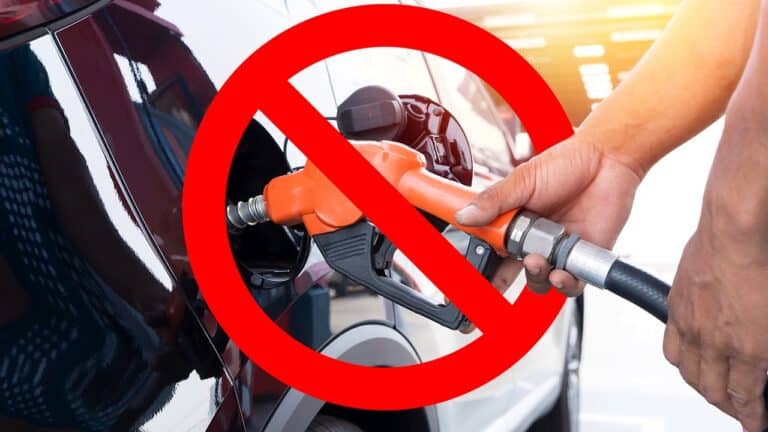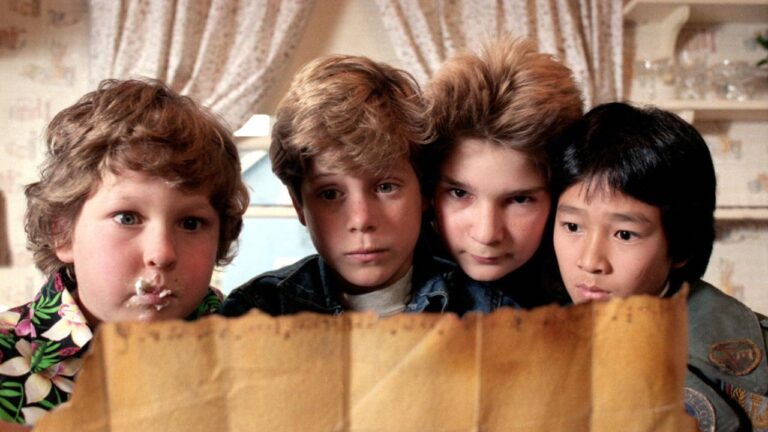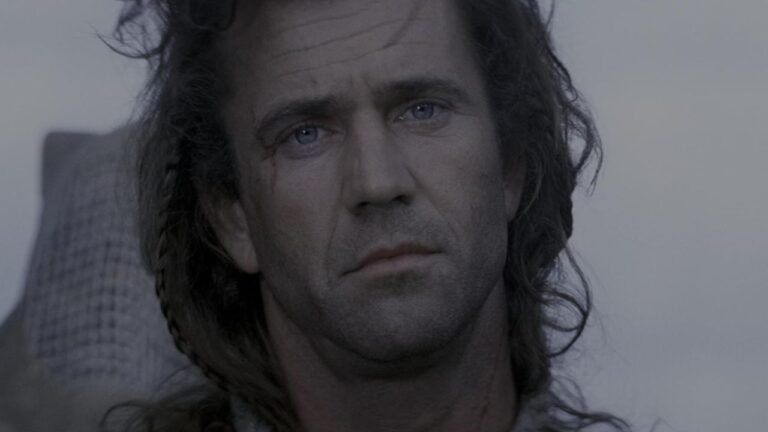24 Movie Trilogies That Are Essential Viewing Before You Die

All good things come in threes. Well, the best movies come in threes.
For reasons that no one fully understands, three seems like the ideal number of movies needed to tell an epic story. Fewer than few movies and the story stands alone. More than three and the story continues on a bit too far.
So it’s no surprise that movie fans love thinking about the best trilogies. These selections transcend genre and era, and while they may appear in franchises with more than three entries, each one of them tells a full cinematic story.
1. Star Wars (1977 – 1983)

More than any other franchise in pop culture, the first three Star Wars films established the importance of trilogies. Luke Skywalker (Mark Hamill) took just his first steps to saving the galaxy by the end of the first movie in 1977. Creator George Lucas had so much more to say.
The Empire Strikes Back (1980) and Return of the Jedi (1983) completed Luke’s journey, allowing him to not just become a Jedi, but also redeem his father Darth Vader (David Prowse and James Earl Jones).
2. The Lord of the Rings (2001 – 2003)

For most film fans, Peter Jackson perfected the movie trilogy with his adaptations of the three Lord of the Rings books by J.R.R. Tolkien, released between 2001 and 2003. Working with co-writers Fran Walsh, Philippa Boyens, and Stephen Sinclair, Jackson captured the scope of Tolkien’s fantasy tale.
Each of the three movies in the trilogy has its own stories, which combine to trace the Hobbit Frodo’s (Elijah Wood) sojourn from the peaceful Shire to Mount Doom, where he’ll destroy the Ring of Power and save the world from its corrupting influence.
3. Three Flavours Cornetto (2004 – 2013)

English director Edgar Wright and star/co-writer Simon Pegg called the three movies they made together the Three Flavours Cornetto, a nod to Krzysztof Kieślowski’s Three Colors trilogy. In each of the movies, characters eat a Cornetto (Americans would call them Drumsticks) of a different flavor.
The ice cream treat isn’t the one thing that binds zombie comedy Shaun of the Dead (2004), police spoof Hot Fuzz (2007), and alien invasion flick The World’s End (2013). All three films also use pop culture tropes to explore concepts of maturation and friendship.
4. The Godfather Trilogy (1972 – 1990)

Some might object to The Godfather trilogy ranking so high on this list. After all, 1990’s The Godfather Part III disappoints compared to most films, in particular, The Godfather (1972) and The Godfather Part II (1974), two of the greatest films of all time.
Still, the first two Godfather films are indeed two of the greatest films ever made, and they more than overcome the shortcomings in the third entry of Francis Ford Coppola’s adaptation of the Mario Puzo novels.
5. Indiana Jones (1981 – 1989)

On one hand, teacher/archeologist/whip enthusiast Indiana Jones (Harrison Ford) has five cinematic adventures. On the other hand, most have already forgotten those two later entries, The Kingdom of the Crystal Skull (2008) and The Dial of Destiny (2023).
With that out of the way, Raiders of the Lost Ark (1981), Indiana Jones and the Temple of Doom (1983), and Indiana Jones and the Last Crusade (1989) bring the adventure serials that creators George Lucas and Steven Spielberg loved as kids. They make for memorable tales for kids of all ages.
6. Three Colors Trilogy (1993 – 1994)

Don’t get distracted by Edgar Wright’s cheeky nod for the Three Flavours Trilogy. The Three Colors Trilogy is a collection of cinematic masterpieces that stand the test of time.
Director Krzysztof Kieślowski based each of the movies in the trilogy on the colors of the French flag and what those represented. The sorrowful Three Colors: Blue (1993) deals with emotional liberty, the comedy Three Colors: White (1994) struggles with equality, and the heated Three Colors: Red (1994) explores fraternity.
7. The Vengeance Trilogy (2002 – 2005)

The three movies in Korean director Park Chan-wook’s Vengeance Trilogy each feature different characters in stand-alone stories. But they have one theme binding them, the desire to seek justice in a hopeless world.
That bleak set-up sounds like it makes for some tough watching. But Park’s deft direction allows audiences to thrill to Sympathy for Mr. Vengeance (2002), Oldboy (2003), and Lady Vengeance (2005), despite their dark subject matter.
8. Spider-Man (2002 – 2007)

Most Blockbuster trilogies have trouble sticking the landing, and Sam Raimi’s trio of Spider-Man movies is no exception. Interference from studio Sony made a mess of Spider-Man 3 (2007), the final movie with Tobey Maguire as Peter Parker and Kirsten Dunst as his true love Mary Jane Watson.
Despite that lackluster ending, the Spider-Man trilogy still stands far above most superhero movies, thanks to Raimi’s earnest take on the subject matter. 2002’s Spider-Man and 2004’s Spider-Man 2 play like melodramas, embracing the same over-the-top approach that made Spider-Man the most popular superhero of all time.
9. Toy Story Trilogy (1995 – 2010)

Pixar broke the mold with 1995’s Toy Story, the first all-CGI animated feature film. Had Pixar moved on to other movies, Toy Story would still remain an impressive proof-of-concept movie.
But by continuing the journey of the cowboy Buzz (Tom Hanks) and spaceman Buzz (Tim Allen), directors John Lasseter and Lee Unkrich and their group of screenwriters found surprising pathos in the secret lives of toys, moving families for generations.
10. Apu Trilogy (1955 – 1959)

Indian director Satyajit Ray brought the lives of Bengali families to the public eye with his Apu Trilogy, three movies about the childhood and young adulthood of Apu, played by Apurba Kumar Roy.
Most viewers consider the first entry Pather Panchali (1955) the best of the series, which focuses on Apu as a boy. But Aparajito (1956) and The World of Apu (1959) allow Apu to grow beyond just a cute kid into a man, putting his struggles into a better context.
11. The Apocalypse Trilogy (1982 – 1994)

John Carpenter’s The Thing (1982), Prince of Darkness (1987), and In the Mouth of Madness (1994) share no characters or storylines. Each of the three films follows people facing an ineffable evil and they all close with the implied end of the world.
It’s that consistent tone of despair that binds the three films together and makes them a proper trilogy, despite their untraditional structure.
12. The Mad Max Trilogy (1979 – 1985)

Like many of the trilogies on this list, the Mad Max series has extended beyond its first three films. But its first three entries all feature Mel Gibson as policeman-turned-road warrior Max Rockatansky, while Tom Hardy plays the character in the most recent films.
Mad Max (1979), The Road Warrior: Mad Max 2 (1982), and Mad Max Beyond Thunderdome (1985) tell the myth of Mad Max. Once the world fell apart after the apocalypse, Max roams the desert in his Charger, looking for people to help.
13. The Man With No Name Trilogy (1964 – 1966)

Before Mad Max, there was the Man With No Name, the character Clint Eastwood plays in Spaghetti Westerns by Italian filmmaker Sergio Leone, A Fistful of Dollars (1964), For a Few Dollars More (1965), and The Good, the Bad and the Ugly (1966).
In each movie, Eastwood’s character (who gets called Joe, Manco, or Blondie) rolls into town and gets into trouble, trouble that he solves with his six-shooter.
14. The Evil Dead Trilogy (1981 – 1992)

The Sam Raimi movies The Evil Dead (1981) and Evil Dead II (1987) make the Evil Dead Trilogy an interesting collection of movies. After the first film became a major indie hit, Raimi and his co-creators got an increased budget for a sequel, so Evil Dead II repeats a lot of the same plot points as its predecessor.
Still, the three movies about Bruce Campbell’s hapless Ash Williams have a different enough tone to stand apart, with The Evil Dead going for straight horror, Evil Dead II injecting comedy, and the finale Army of Darkness (1992) sending Ash to the Middle Ages.
15. Star Trek: The Bounty Trilogy (1982 – 1986)

After the slow-paced Star Trek: The Motion Picture (1979) failed to impress sci-fi fans attuned to Star Wars-style adventure, Paramount Pictures commissioned the more thrill-packed Star Trek II: The Wrath of Khan (1982).
The Wrath of Khan sets of a three-movie story, in which Mr. Spock (Leonard Nimoy) sacrifices himself for the Enterprise and Captain Kirk (William Shatner) fights Klingons to resurrect his friend, which goes through Star Trek III: The Search for Spock (1984) and ends in the past with Star Trek IV: The Voyage Home. Along the way, they steal a Klingon ship and christen it “the Bounty,” giving a name to the trilogy.
16. Dark Knight Trilogy (2005 – 2012)

Director Christopher Nolan changed superhero movies forever with his more grounded take on Gotham City in the origin film Batman Begins (2005). That film proved a hit, but nothing like his follow-up The Dark Knight (2008), in which Christian Bale’s Batman faces off against Heath Ledger as the Joker.
Fans still have mixed feelings about the final entry The Dark Knight Rises (2012), but the three films still offer a satisfying reinvention of the Batman mythos.
17. The Austin Powers Trilogy (1997 – 2002)

No one in the late 1990s could escape impressions of Austin Powers, Mike Myers’ British spy who wakes up in the present after being frozen in the swinging ‘60s.
Austin Powers: International Man of Mystery (1997), Austin Powers: The Spy Who Shagged Me (1999), and Austin Powers in Goldmember (2002) benefited from Myers playing multiple characters, especially Austin’s droll arch-enemy Dr. Evil.
18. Bourne Trilogy (2002 – 2007)

Based on the novels by Robert Ludlum, the Bourne Trilogy follows super-spy Jason Bourne (Matt Damon), who uncovers a government conspiracy while regaining his memory.
2002’s The Bourne Identity, directed by Doug Liman, is an action flick, but The Bourne Supremacy (2004) and The Bourne Ultimatum (2007) captured the public imagination, thanks to the visceral, shaky-camera style of director Paul Greengrass.
19. Trilogy of the Dead (1968 – 1985)

United Film Distribution Company.
Philadelphia-based filmmaker George A. Romero invented the modern zombie movie with 1968’s Night of the Living Dead, which introduced the idea of corpses rising and eating human flesh.
In 1978, Romero expanded on the concept with Dawn of the Dead, which used the undead for social satire. His run of great movies ended with Day of the Dead from 1985, a relentless and bleak movie about learning to cohabitate with zombies. Romero’s second trilogy, which started with Land of the Dead in 2005, doesn’t match up to his first trio, securing the legacy of that original trilogy.
20. Guardians of the Galaxy (2014 – 2023)

Few people heard of director James Gunn when he made the Marvel movie Guardians of the Galaxy in 2014, let alone the C-list characters who made up the team, heroes such as Rocket Raccoon (voiced by Bradley Cooper) and Star-Lord (Chris Pratt).
But Gunn’s mix of irreverence and genuine pathos turned them into household names. Guardians fever grew with the sequel Guardians of the Galaxy Vol. 2 (2017) and ended on a high note with the long-awaited capper Guardians of the Galaxy Vol. 3 (2023).
21. The Before Trilogy (1995 – 2013)

As this demonstrates, trilogies best suit epic stories, tales that either focus on a single hero or diminish the trials and tribulations of any one individual. The Before Trilogy from director Richard Linklater changes up the trend with his series of romantic dramas.
1995’s Before Sunrise starts out simple enough, following one night that American Jesse (Ethan Hawke) and Frenchwoman Celine (Julie Delpy) spend together. The follow-ups Before Sunset (2004) and Before Midnight (2013) check in on the couple later on, showing that a healthy relationship is the most challenging adventure.
22. Back to the Future (1985 – 1990)

Many of the trilogies on this list have an off-kilter third entry, but none like Back to the Future. Where the first movie, directed by Robert Zemeckis and co-written by Bob Gale, takes 80s teen Marty McFly (Michael J. Fox) back to the 1950s to meet his parents when they were young, the series goes in strange directions.
Back to the Future Part II (1989) goes far into the future and also revisits the first film’s events, but Back to the Future Part III (1990) switches genres, becoming more of a Western than a sci-fi film. Given that Part III is a very satisfying Western, the change is a welcome one.
23. Friday the 13th: The Tommy Jarvis Trilogy (1984 – 1986)

As with Star Trek’s Bounty Trilogy, the one proper three-movie story among the twelve entries in the Friday the 13th franchise appears in the middle. The fourth entry, 1984’s Friday the 13th: The Final Chapter, introduces Tommy Jarvis (Corey Feldman), a boy who manages to kill Jason Voorhees for good.
In 1985, Friday the 13th: A New Beginning tried to reboot the series with a whodunnit, positioning now-teen Tommy (John Sheppard) as a troubled soul who might be following in Jason’s footsteps. Friday the 13th Part VI: Jason Lives from 1986 sees Jason come back from the dead, and the now-grown Tommy (Thom Matthews) tries to stop him.
24. Men in Black (1999 – 2012)

The first Men in Black (1997) is a perfect movie. Stars Tommy Lee Jones and Will Smith make an ideal odd couple, each trying to outdo the other as government agents who investigate alien invaders.
Director Barry Sonnenfeld could never replicate that first film, but the basic premise worked enough to sustain two more entries, Men in Black II in 2002 and Men in Black III in 2012.





